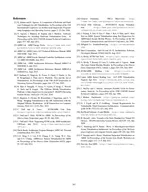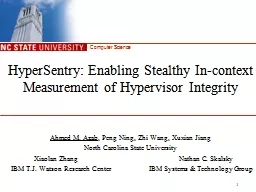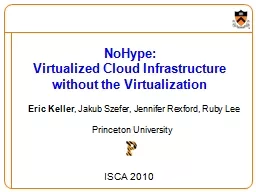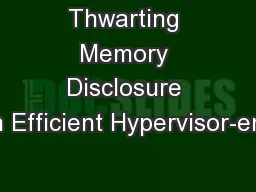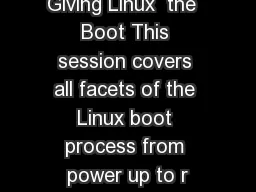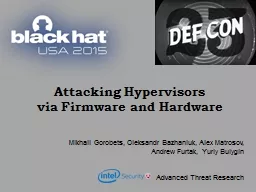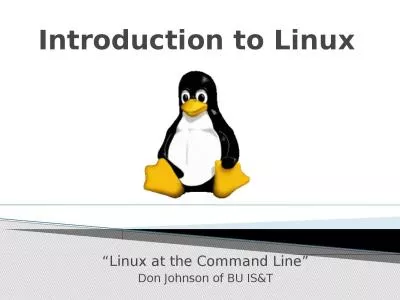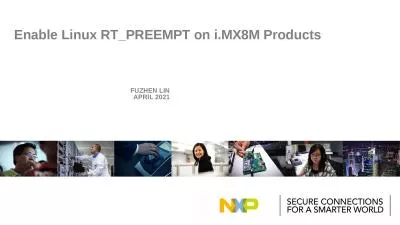PDF-KVMARM The Design and Implementation of the Linux ARM Hypervisor Christoffer Dal
Author : phoebe-click | Published Date : 2014-10-03
columbiaedu Jason Nieh Department of Compouter Science Columbia University niehcscolumbiaedu Abstract As ARM CPUs become increasingly common in mobile devices and
Presentation Embed Code
Download Presentation
Download Presentation The PPT/PDF document "KVMARM The Design and Implementation of ..." is the property of its rightful owner. Permission is granted to download and print the materials on this website for personal, non-commercial use only, and to display it on your personal computer provided you do not modify the materials and that you retain all copyright notices contained in the materials. By downloading content from our website, you accept the terms of this agreement.
KVMARM The Design and Implementation of the Linux ARM Hypervisor Christoffer Dal: Transcript
Download Rules Of Document
"KVMARM The Design and Implementation of the Linux ARM Hypervisor Christoffer Dal"The content belongs to its owner. You may download and print it for personal use, without modification, and keep all copyright notices. By downloading, you agree to these terms.
Related Documents

